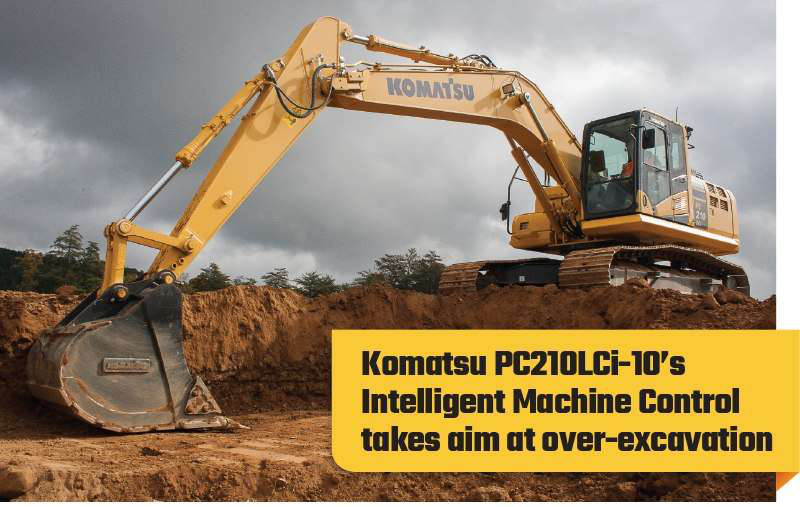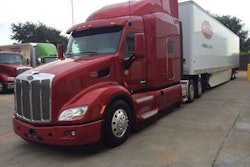 Our 2015 Innovation award winners include an excavator that goes into semi-automatic mode every time you get close to the target surface, a pickup truck body that was the talk of 2014 and a generator with massive capabilities to give power to remote – even Third World – job sites and communities. Go with us into the design process as we examine how these standout products were created.
Our 2015 Innovation award winners include an excavator that goes into semi-automatic mode every time you get close to the target surface, a pickup truck body that was the talk of 2014 and a generator with massive capabilities to give power to remote – even Third World – job sites and communities. Go with us into the design process as we examine how these standout products were created.
 We’re used to numbers – some of them in the double digits – when manufacturers talk about fuel efficiency gains in new equipment. But when Komatsu America introduced its PC210LCi-10 in late 2014, it talked about a huge number, and this time it didn’t involve fuel efficiency, but rather construction time. Komatsu says the semi-automatic Intelligent Machine Control on its PC210LCi-10 excavator will help make over-excavation a thing of the past. And, compared with using a standard PC210LC-10 excavator, the company says in field tests the “intelligent” excavator showed up to a 63-percent reduction in construction time. The machine is semi-automatically limited from digging beyond the target surface, as defined by project files downloaded either through a thumb drive inserted into the bottom of the in-cab control box or remotely through project partner Topcon’s Sitelink 3D Enterprise program. Previewed at ConExpo in March, the excavator became available in North America last month, the culmination of a project that’s obviously got those involved buzzing. “This is no longer machine guidance, but machine control,” says Peter Robson, Komatsu’s director of intelligent machine controls.
We’re used to numbers – some of them in the double digits – when manufacturers talk about fuel efficiency gains in new equipment. But when Komatsu America introduced its PC210LCi-10 in late 2014, it talked about a huge number, and this time it didn’t involve fuel efficiency, but rather construction time. Komatsu says the semi-automatic Intelligent Machine Control on its PC210LCi-10 excavator will help make over-excavation a thing of the past. And, compared with using a standard PC210LC-10 excavator, the company says in field tests the “intelligent” excavator showed up to a 63-percent reduction in construction time. The machine is semi-automatically limited from digging beyond the target surface, as defined by project files downloaded either through a thumb drive inserted into the bottom of the in-cab control box or remotely through project partner Topcon’s Sitelink 3D Enterprise program. Previewed at ConExpo in March, the excavator became available in North America last month, the culmination of a project that’s obviously got those involved buzzing. “This is no longer machine guidance, but machine control,” says Peter Robson, Komatsu’s director of intelligent machine controls.
Komatsu wants to make clear the machine control takes over only when an operator nears the target surface as defined by downloaded project files. “When the bucket reaches the target design surface, the automation limits it from going below grade, even allowing semi-automatic tracing of the target design surface,” says Jason Anetsberger, Komatsu America project marketing manager, intelligent machine controls. In all other areas, operators are in complete control, and they can opt for manual controls at any time. “The fundamental design challenge was how to smartly add automation to increase the efficiency of the machine without limiting the productivity of an experienced operator,” Anetsberger explains.
“Productivity gains depend on the operator, who still controls the speed of the operation. This will raise an operator’s efficiencies, whatever his experience.” The company also wants to differentiate this system from what it calls “conventional guidance systems” now available for excavators. “With conventional guidance, the grade quality depends on the skill of the operator,” Robson says. “When you talk to customers, one of the biggest problems they had with these systems is speed. The operator is always constantly monitoring the indicate-only system to see if he’s on grade. With Intelligent Machine Control, the operator can focus on moving materials efficiently – and with plus/minus 42-millimeter accuracy – without worrying about meeting the target.” “This actually empowers the operator,” Anetsberger adds. “He’s not relying on people outside of the machine to tell him whether he’s on grade, and he has less tunnel vision than if he was constantly looking at a machine guidance monitor.”
The excavator’s Intelligent Machine Control system – modeled in part after Komatsu’s intelligent dozer line introduced last year and developed concurrently with the dozer controls – offers real-time bucket edge positioning in relation to the machine and job surface. The system has several components, all factory installed:
The only obvious clues an intelligent machine is different from the standard PC210LC-10 are the antennas and in-cab control box. All other components are internal. These components give the excavator these semi-automatic capabilities when near the target surface.
Even if the machine is inclined while working, the facing angle compass ensures the machine is facing perpendicular to the target surface.









